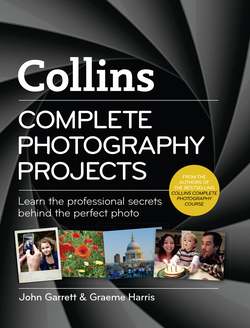Читать книгу Collins Complete Photography Projects - John Garrett - Страница 30
THE SHUTTER
ОглавлениеThe speed of the shutter is the other half of the exposure partnership, acting in tandem with the size of the aperture to control how much light reaches the sensor or film to form the image.
To get to grips with the function of the shutter, set your camera to shutter priority (S or Tv). The available shutter speeds will go from about 30 seconds to 1/4000 second. There is one more shutter setting, called Bulb (B), which can only be used when you are in manual mode (M). Here the shutter will stay open as long as the shutter release is kept pressed – a facility generally used for long night exposures.
Practise shooting at different shutter speeds, focusing on moving objects so that you can observe whether they are frozen in action or blurred. With speeds slower than about 1/60 second any camera movement will start to show as blur in the overall picture, so if you want sharp pictures at slow shutter speeds you will need to support the camera on a tripod or some object such as a wall or table. For hand-held telephoto lenses, assign a shutter speed that is at least as fast as the telephoto setting you are using – for example, a 200mm lens needs a speed of at least 1/200 second to avoid blur from camera movement. If you are using an APS-C sensor camera, you need to increase that to 1/300 second.
When you look at the photographs carefully afterwards, you will see that there is a considerable graphic difference between a picture in which a fast shutter speed has held hard-edged colour and shapes and one shot on a slow shutter speed, where the colour and shapes have become soft-edged.
FAST SHUTTER SPEED
The cyclist rode past the stationary camera, which was on a tripod. Exposure at 1/1000 second has frozen his movement.
SLOW SHUTTER SPEED
Here the exposure was 1/30 second as the cyclist rode past the stationary camera; the slow exposure has blurred the subject.
PANNING
Again the cyclist rode past and again the exposure was 1/30 second. This time the camera moved to follow his action, a technique known as panning. The result is that the cyclist is sharp and the background is blurred.
